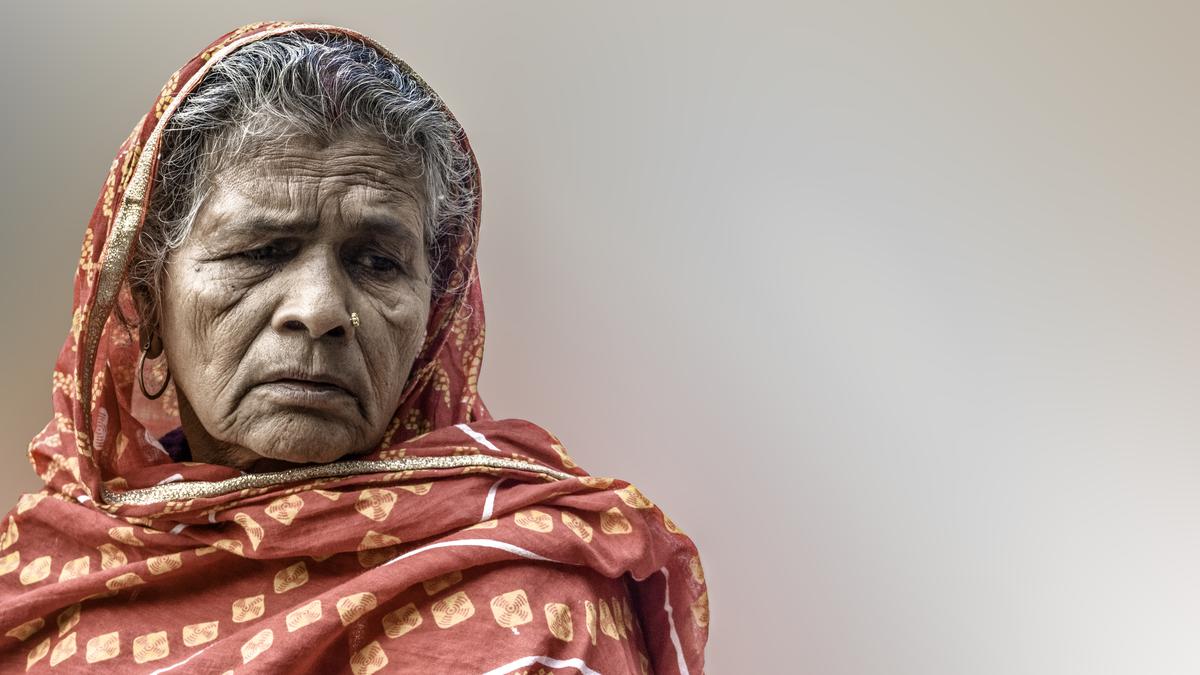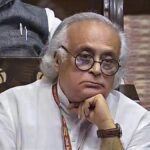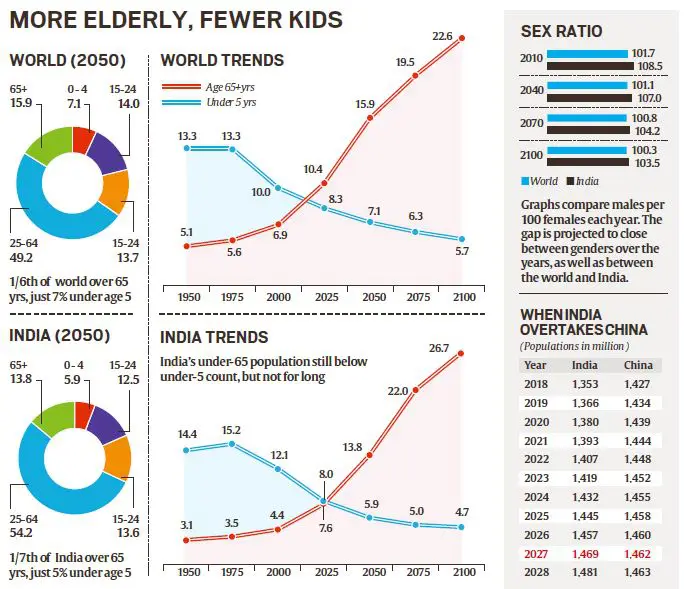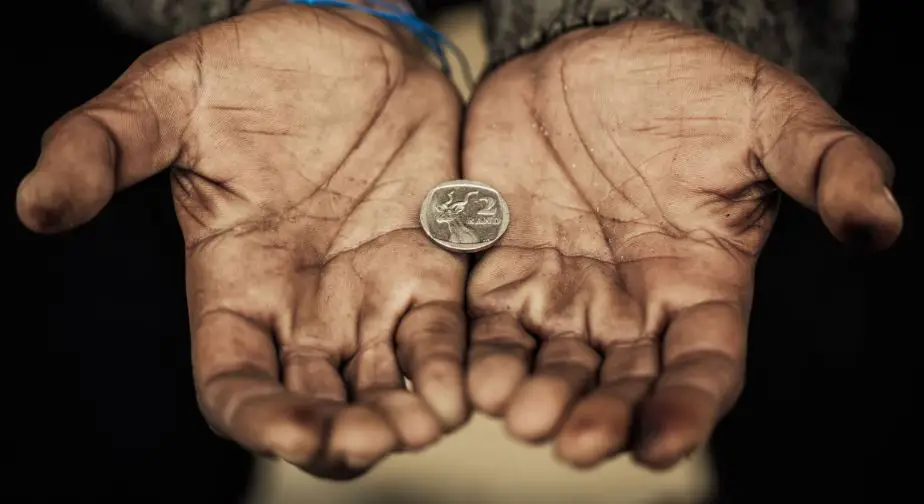Table of Contents
As life expectancy rises and birth rates decline, a nation begins to see a larger proportion of its population ageing. India will soon approach a critical juncture where the proportion of elderly will peak, placing an overwhelming strain on the working populace. Women, who generally outlive men, are at the centre of this crisis. As a high share of them are out of the labour force, they lack savings. They are more prone to health issues compared to men and often find basic tasks more challenging during their sunset years. They are also less aware of government schemes than men.
Significance of the Aging Crisis
- The share of elderly population is estimated to double to 20.8% by 2050. Also, elderly women will outnumber senior men.
- Close to 30% of women above 60 years have one morbidity and nearly 25% suffer from two morbidities.
- 30% of elderly women have difficulty getting out of bed, while 25% find it tough to take a bath and eat without assistance.
- Less than 25% of elderly women are aware of concession schemes given by the government for senior citizens.
Objectives
The objective is to understand the challenges faced by the aging population in India, particularly elderly women, and identify potential solutions to alleviate their hardships and improve their quality of life. By addressing these issues, the aim is to ensure that the elderly population can age with dignity and have access to the necessary support and resources.
Effects of the Aging Crisis
The effects of the aging crisis in India are manifold:
- An increased strain on the working population as the proportion of elderly individuals rises.
- Higher healthcare costs due to the prevalence of health issues among the elderly population.
- Greater demand for caregiving, as a significant number of elderly individuals require assistance with basic activities.
- Inadequate awareness of government schemes, leading to a lack of utilization of available benefits.
- Potential social isolation and mental health issues among the elderly population.
Pros and Cons of Addressing the Crisis
Addressing the aging crisis in India has several potential advantages:
- Improved quality of life for the elderly population, particularly women.
- Reduced burden on the working population through the implementation of appropriate support systems and policies.
- Enhanced social cohesion and intergenerational relationships through caregiving and support networks.
However, there may also be challenges in addressing the crisis:
- Financial implications associated with the provision of healthcare and support for the aging population.
- Complexity in implementing and ensuring efficient distribution of resources to those in need.
- The need for societal and cultural changes to foster a supportive environment for the elderly.
Fun Fact
Did you know that by the year 2100, seniors in India are projected to constitute 36% of the total population? This signifies a significant shift in demographics and highlights the urgency in addressing the challenges faced by the aging population.
Mutiple Choice Questions
1. What is the estimated proportion of elderly population by 2050?
a) 10.4%
b) 15.2%
c) 20.8%
d) 25.6%
Explanation: The share of elderly population is estimated to double to 20.8% by 2050 (as stated in the information).
2. Which gender generally outlives the other?
a) Men generally outlive women
b) Women generally outlive men
c) There is no significant difference in life expectancy between men and women
d) Both genders have an equal chance of outliving the other
Explanation: Women generally outlive men (as stated in the information).
3. What percentage of women above 60 years have at least one morbidity?
a) 15%
b) 20%
c) 25%
d) 30%
Explanation: Close to 30% of women above 60 years have one morbidity (as stated in the information).
4. What percentage of elderly women have difficulty getting out of bed?
a) 15%
b) 20%
c) 25%
d) 30%
Explanation: 30% of elderly women have difficulty getting out of bed (as stated in the information).
5. How many elderly women are aware of concession schemes given by the government for senior citizens?
a) Less than 10%
b) Less than 25%
c) Approximately 50%
d) More than 75%
Explanation: Less than 25% of elderly women are aware of concession schemes given by the government for senior citizens (as stated in the information).
Brief Summary | UPSC – IAS
India is facing an impending crisis as its population ages and birth rates decline. The number of elderly people is expected to double to 20.8% by 2050, with elderly women outnumbering senior men. Many elderly women are out of the labor force and lack savings, making them more vulnerable to health issues and difficulties with basic tasks. They are also less aware of government schemes for senior citizens. The prevalence of chronic health conditions is higher among elderly women, and they face challenges in performing basic activities. Additionally, there is a lack of awareness and utilization of social security schemes among elderly women in low-income households.











